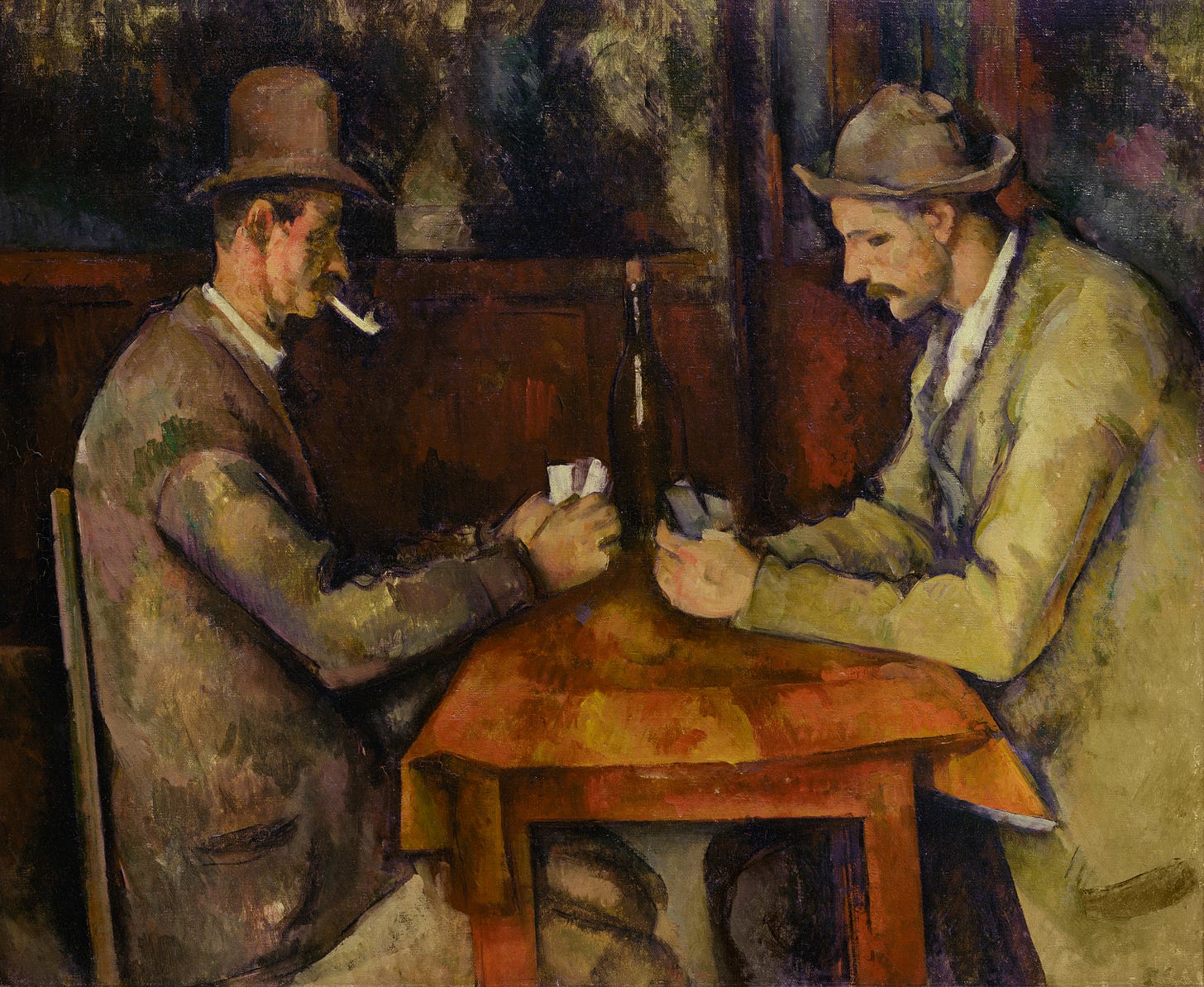Well, we’re down to the final table of the WSOP Main Event, the biggest Poker tournament of the year. Coverage of the final table starts Sunday, 6PM ET.
2023 was the biggest Main Event ever, with over 10 thousand players and a top prize of over 12 million dollars. Like every year, watching the tournament is a herculean effort, and the entertainment payoff is fairly thin - first we root for our favorite players, then, as they get eliminated, previous winners, then anyone we’ve heard of, then any female player, then anyone who seems different and interesting in any way, the older guy, the guy with the funny glasses, the guy from Pittsburgh, the Japanese blogger, the guy whose hat looks kinda like that one hat you used to have. Then, eventually, you arrive at a final table of 9 guys who aren’t any of those things, and you go through a more finely-grained version of the same process. So why bother?
The best way to watch Poker is the television cash games - High Stakes Poker, Poker After Dark. Or to follow a YouTuber like Brad Owen or find a Twitch streamer you like, someone whose journey through the game you can follow and try to understand and learn from. But the Main Event is a tradition and a spectacle and there is something beautiful about it. There’s something beautiful about its refusal to reliably produce the kind of entertainment we want - dramatic narratives, relatable characters, heroic encounters, meaningful arcs. Instead, there’s just some guys playing cards.
Poker is horrific, relentless, uncaring. Watching the Main Event is like watching a pachinko machine made out of human beings, each one a fiercely determined little peg of individuality, each hand a tiny Newtonian collision whose outcome is determined by arbitrary, microscopic details, so far beyond our ability to predict as to be meaningless. It is intentionally designed to be this way, a vast machine whose purpose is to eviscerate meaning, to cut it into paper-thin slices and scramble it, so that it almost disappears, so that finding the signal in the noise is almost impossible, full of false starts and dead ends, and ultimately only visible from a vast distance, determinism slowly reappearing as a familiar shape on the horizon, the curved back and long tails of a normal distribution.
But from the perspective of the peg - ouch. They’re not a statistic, and, for them, each collision is as interesting and important as a NASCAR accident, and, eventually, inevitably, as fatal. Hand after hand, we get to decide how much we care, zooming in to see the specks of dust, the beads of sweat, the pulse in the neck and the texture of the flop, or zooming out to see the vast, indifferent, thermodynamic flow.
The best thing about PokerGo’s coverage of the Main Event is commentators Ali Nejad and Nick Schulman, aka the Night Shift. Schulman’s laconic analysis is old school gambler cool with enough new school style to give you a sense of how the best players currently think about the game - in terms of ranges, and mixed strategies, with an eye on subtle second-order effects, like how the cards in your own hand interfere with the combos your opponent can be holding, shifting, ever so slightly, the probability that they’re semi-bluffing with a draw.
By the way, the fact that we can watch Poker at all is thanks to one man, Henry Orenstein. Orenstein is a toy designer and Poker player who, in 1995, invented the hole card cam, the innovation that catalyzed televised Poker and ushered in the game’s modern era. The hole cam is what makes the game legible, and it’s what makes watching fun, because it’s what gives us that irresistible feeling of knowing something important about the story that is invisible to the main characters. The players study so hard, care so much, and we’re barely paying attention, but, as if by magic, we just know.
Orenstein had an incredible life. When he was a boy in Poland, his family evaded the Nazi authorities by hiding in secret spaces between double walls. Eventually, his parents were caught and killed, and he and his siblings were thrown into a concentration camp. He survived the camps and made it to America, where he built a successful career creating and selling toys. In addition to inventing the hole cam he’s also responsible for introducing Transformers to America.
It’s easy to forget that the particular world we live in, with its specific features, wasn’t pre-determined, wasn’t the inevitable result of unyielding forces, the relentless operation of statistical mechanics. The world we encounter is the way it is because some people, amidst the swirling noise, the unending turbulence, the good luck and the bad beats, invent clever new ways of looking at things.




